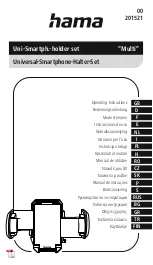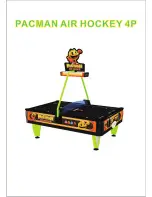
EU Directives on the Protection
of the Environment and Other
Euro Stuff
RoHS
This product is compliant with the EU
Directive 2002/95/EG for the Restriction of the use
of Certain Hazardous Substances in Electrical and
Electronic Equipment. No lead (Pb), cadmium (Cd),
mercury (Hg), hexavalent chromium (Cr+6), PBB
or PBDE is intentionally added to this device. Any
traces of impurities of these substances contained
in the parts are below the RoHS specified threshold
levels.
REACh
This product is compliant with the European
Union Directive EC1907/206 for the Registration,
Evaluation, Authorization, and Restriction of
chemicals (REACh) and contains none or less than
0.1% of the chemicals listed as hazardous chemicals
in the REACh regulation.
WEEE
As with the disposal of all old
electrical and electronic equipment, this
product is not to be treated as regular
household waste. Instead it shall be
handed over to the applicable collection point for
the recycling of electrical and electronic equipment.
CE
This product complies with the European
Union Council Directives and Standards relating
to electromagnetic compatibility EMC Directive
(2006/95/EC) and the Low Voltage Directive
(2004/108/EC).
SPL Warning:
Exposure to extremely high noise levels may
cause permanent hearing loss. Individuals vary
considerably in susceptibility to noise-induced
hearing loss but nearly everyone will lose some
hearing if exposed to sufficiently intense noise
for a period of time. The U.S. Government’s
Occupational Safety and Health Administration
(OSHA) has specified the permissible noise level
exposures shown in the following chart. According
to OSHA, any exposure in excess of these permissible
Duration per Day
in Hours
Sound Level, dBA, Slow
Response
Typical Example
8
90
Duo in small club
6
92
4
95
Subway train
3
97
2
100
Very loud classical music
1.5
102
1
105
0.5
110
0.25 or less
115
Loudest parts of a rock concert
limits could result in some hearing loss. To ensure
against potentially dangerous exposure to high
sound-pressure levels, it is recommended that all
persons exposed to equipment capable of producing
high sound-pressure levels use hearing protectors
while the equipment is in operation. Earplugs or
protectors in the ear canals or over the ears must
be worn when operating the equipment in order
to prevent permanent hearing loss if exposure is in
excess of the limits set forth here:




































